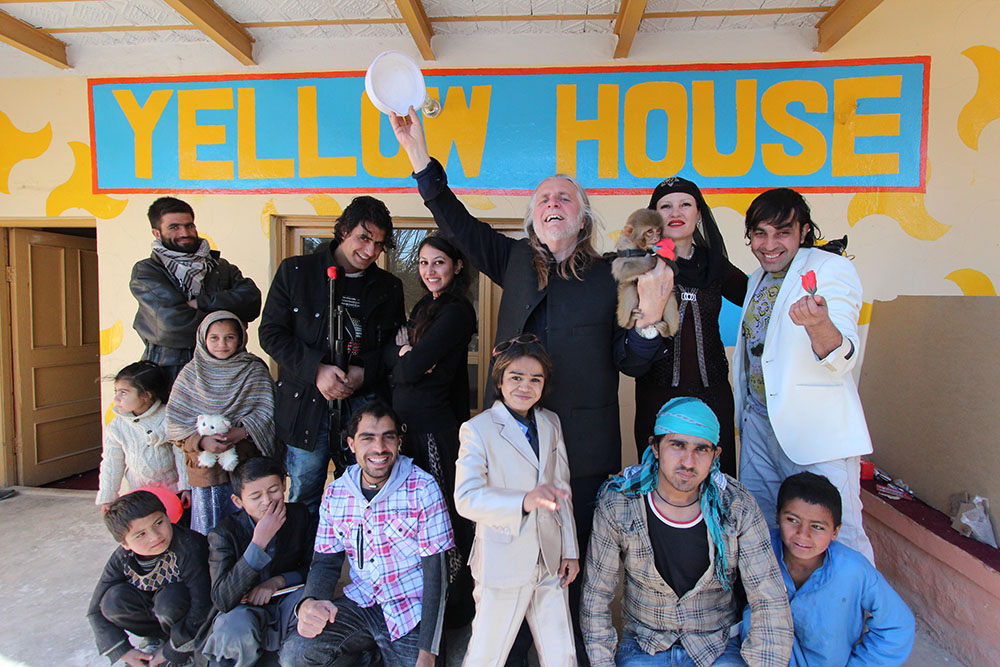Stranger than fiction
The world of documentary storytelling is growing increasingly diverse – and ever-more compelling – as this year’s International Documentary Film Festival Amsterdam (IDFA) attendees knew only too well.
 Snow Monkey
Snow Monkey
It is hard to imagine today, in our multiplatform digital universe, that documentary was not so long ago viewed as a dirty word. Too often dismissed as the poor second cousin to the narrative feature, only a sustained cage-rattling campaign began to wake up the industry (and audiences) to truth.
In the past two decades, thanks to innovative storytelling methods, the paradigm has shifted. There was Hollywood studio mogul Robert Evans recounting his own colourful story in Brett Morgan’s The Kid Stays in the Picture. Leon Gast blew the dust off a forgotten, iconic sporting event with his archive-driven masterpiece When We Were Kings. Then, before the art form could edge toward event cinema territory, a larger-than-life everyman (Michael Moore) attacked US foreign policy with an Oscar-winning talking point, in the scathing and timely Fahrenheit 9/11. Similarly, Super-Size Me helped solidify what Rolling Stone dubbed the “rise of the super doc”. But it was Sarah Polley’s Stories We Tell (seamlessly blending archive and recreation) that opened us up to the possibilities of the modern doc.
Ally Derks, director of IDFA, believes documentary has now shifted into an elastic and invigorating space thanks to the contemporary shifts in methods of storytelling – and audiences’ willingness to accept them.
“Documentaries look and feel more like fiction,” she says. “The drama is there, the character development. All these things you see in narrative fiction, you now see in documentary as well. It’s really great, great storytelling that holds an audience.”
Australia has enjoyed its own reinvigoration at home with feature-length documentaries – led by That Sugar Film sailing past $1 million at the box office, through special event screenings. It’s a scenario that industry heavyweight Julia Overton, attending IDFA for co-pro duties on the upcoming feature doc The Life and Times of John C., admits requires a broad skill base.
“Films like That Sugar Film and I Am a Girl and Frackman are cause films,” she says. “I think there’s more crossover of people now who are completely dedicated to documentary, but also are commercially savvy. It’s an incredibly interesting time. It’s been tough for a while in Australia, particularly with the broadcasters focusing on factual television. In a way, you have to ask yourself why you are wanting to make your documentary – whether you want to simply make money, or because you feel compelled to tell the story.”
Australian filmmaker George Gittoes, whose new documentary Snow Monkey tracks the realities of everyday life in Afghanistan (while also stretching to over two-and-a-half hours in length), falls squarely in the latter category, although he remains optimistic about the opportunities pay television and providers like Netflix offer. Most of all, though, he feels that audiences have shifted in their tastes since he was last at IDFA, six year earlier.
“Audiences are less resistant to documentaries that push the limits of the medium,” he says, of the blurring between documentary as art form and journalistic endeavour. “In 2009, all the question-time was dominated by concerns about the film blurring the lines between what was considered real and what was unreal. Many people were highly challenged by my integration of drama sequences and visual gags into the straight cinema verité and journalistic material. This time, no one seems to be worried about it.”
Richard Harris, head of Business and Audience at Screen Australia, is cautiously upbeat about the documentary as a contemporary storytelling form. While he admits the landscape domestically remains challenging, the advent of increasingly diverse storytelling methods and platforms bodes well for the foreseeable future.
“IDFA remains an important international festival, both for existing documentary titles as well as a place where projects in development gain the attention of the global marketplace,” he says. “This year the presence of titles such as Snow Monkey and Only the Dead have continued to build on Australia’s reputation for strong documentary voices, while the reception to innovative projects such as Oscar Raby’s virtual reality project Islands reflects the documentary sector’s global fascination with emergent forms of digital storytelling.”
Ed Gibbs is a senior journalist turned producer. He writes for publications including
The Guardian,
The Sydney Morning Herald,
Empire and
Rolling Stone. He has also produced the Crystal Bear-nominated
Let’s Dance: Bowie Down Under, a rare documentary short about David Bowie in Australia, which premiered at the 65
th Berlinale earlier this year, and screened at the 59
th BFI London Film Festival last month.